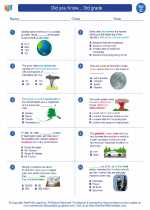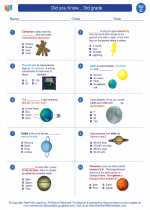Gay-Lussac's Law
Gay-Lussac's Law, also known as the pressure-temperature law, states that the pressure of a gas is directly proportional to the temperature, provided that the volume and amount of gas remain constant.
Explanation:
Gay-Lussac's Law can be expressed in the following mathematical form:
P ∝ T
Where P is the pressure of the gas and T is the temperature in Kelvin.
This means that if the temperature of a gas increases, its pressure will also increase, and if the temperature decreases, the pressure will decrease, as long as the volume and amount of gas are kept constant.
Study Guide:
- Understanding the Law: Make sure you understand the concept that pressure and temperature are directly proportional to each other when the volume and amount of gas are constant.
- Mathematical Form: Practice writing and understanding the mathematical expression of Gay-Lussac's Law (P ∝ T).
- Real-life Examples: Find examples in everyday life where Gay-Lussac's Law applies, such as in a pressure cooker or a gas cylinder.
- Graphical Representation: Learn to interpret and draw graphs that illustrate the relationship between pressure and temperature according to Gay-Lussac's Law.
- Word Problems: Solve word problems that involve changes in pressure and temperature of a gas while keeping the volume and amount constant.
Understanding Gay-Lussac's Law is important in the study of gas behavior and is fundamental in fields such as chemistry, physics, and engineering.
.◂Science Worksheets and Study Guides Third Grade. Did you Know... 3rd grade
Study Guide Did you Know... 3rd grade
Did you Know... 3rd grade  Worksheet/Answer key
Worksheet/Answer key Did you Know... 3rd grade
Did you Know... 3rd grade  Worksheet/Answer key
Worksheet/Answer key Did you Know... 3rd grade
Did you Know... 3rd grade  Worksheet/Answer key
Worksheet/Answer key Did you Know... 3rd grade
Did you Know... 3rd grade 

 Worksheet/Answer key
Worksheet/Answer key
 Worksheet/Answer key
Worksheet/Answer key
 Worksheet/Answer key
Worksheet/Answer key

The resources above cover the following skills:
LIFE SCIENCE
Unity and Diversity
Construct an argument from evidence to explain the likelihood of an organism’s ability to survive when compared to the resources in a certain habitat (e.g., freshwater organisms survive well, less well, or not at all in saltwater; desert organisms survive well, less well, or not at all in woodlands).
Create models that illustrate how organisms and their habitats make up a system in which the parts depend on each other.